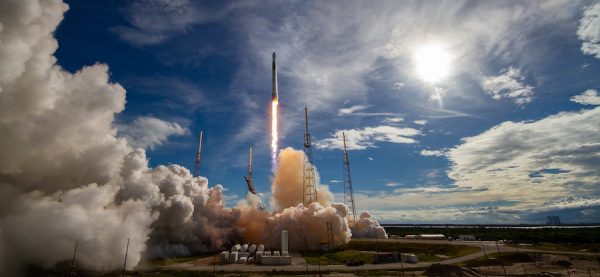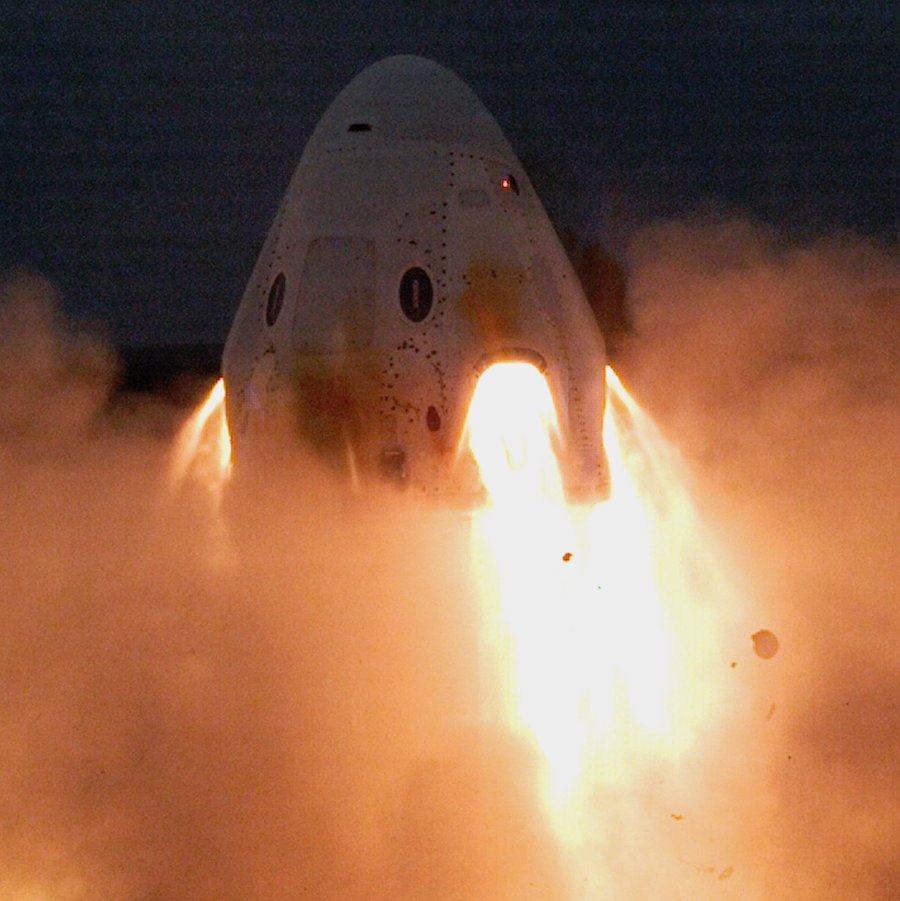After quiet autumn, SpaceX preps for busy December launch schedule – Spaceflight Now

After a lull in launch activity this fall, SpaceX teams at Cape Canaveral are preparing for up to four Falcon 9 missions in December to close out 2019 with a surge of launches.
SpaceX has launched just one Falcon 9 rocket since Aug. 6, but the company’s launch cadence is set to return to its normally brisk pace beginning Dec. 4 with the planned liftoff of a Dragon resupply mission to the International Space Station.
Launch teams at Cape Canaveral’s Complex 40 launch pad are readying a Falcon 9 rocket and Dragon cargo capsule for the journey to the space station. Launch on Dec. 4 is scheduled for 12:51 p.m. EST (1751 GMT), roughly the moment when the Earth’s rotation brings Florida’s Space Coast under the space station’s ground track.
The Falcon 9’s first stage is expected to attempt a landing on SpaceX’s drone ship in the Atlantic Ocean after the Dec. 4 launch.
The Dragon supply ship will deliver several tons of equipment to the station, including more than a ton of specimens and hardware for scientific experiments, such as an investigation into flame behavior in microgravity, and 40 mice scientists are launching for a study of muscular degradation during spaceflight.
Assuming an on-time launch Dec. 4, the logistics mission will arrive at the station Dec. 7 and return to Earth with cargo in early January for a splashdown in the Pacific Ocean.
The cargo mission will be the SpaceX’s 19th Dragon resupply flight since the company began operational deliveries to the station in October 2012.
Resupply missions under SpaceX’s current $3 billion Commercial Resupply Services contract with NASA will end with the 20th cargo flight in March. The final Cygnus resupply mission under a similar CRS contract with Northrop Grumman launched earlier this month.
NASA has awarded separate follow-on cargo delivery contracts to Northrop Grumman, Sierra Nevada Corp. and SpaceX to meet the space station’s logistics needs through at least 2024, with each company guaranteed a minimum of six resupply missions.
SpaceX workers will gear up for a quick turnaround before the next Falcon 9 launch from pad 40 as soon as Dec. 15 with a commercial communications satellite jointly owned by Tokyo-based Sky Perfect JSAT Corp. and Kacific, a startup telecom company headquartered in Singapore.
The launch window Dec. 15 opens at 7:10 p.m. EST (0010 GMT on Dec. 16).
The JCSAT 18/Kacific 1 spacecraft was built at Boeing’s satellite factory in El Segundo, California. According to Kacific, the satellite will weigh around 15,000 pounds (6,800 kilograms) fully fueled for launch.
A Falcon 9 rocket will deploy the JCSAT 18/Kacific 1 satellite in an elliptical transfer orbit, then the spacecraft will use its on-board propulsion system to reach a circular geostationary orbit more than 22,000 miles (nearly 36,000 kilometers) over the equator. The satellite will maneuver into a position over the Asia-Pacific to begin a planned 15-year service life.
JSAT will use the satellite’s Ku-band capacity to provide communication services over Japan and the broader Asia-Pacific region, with a coverage range extending from Indonesia and Southeast Asia to coastal China and Eastern Russia.
Kacific’s mission will utilize the satellite’s Ka-band payload, which includes 56 spot beams delivering up to 60 gigabits per second of data throughput capacity, the company said.
Meanwhile, another Falcon 9 rocket will be prepared for launch from pad 39A at the nearby Kennedy Space Center for a high-altitude abort test of SpaceX’s Crew Dragon spacecraft, a vehicle designed to carry astronauts into orbit beginning next year.

Technicians are readying a Crew Dragon spacecraft for the in-flight launch escape test following a ground test-firing of the capsule’s SuperDraco abort thrusters Nov. 13 at Cape Canaveral.
SpaceX plans to launch the Crew Dragon spacecraft from pad 39A — the same location where SpaceX will launch future crew missions — aboard a full-size Falcon 9 rocket. The second stage of the Falcon 9 will be filled with propellant, but will not be fitted with a main engine because SpaceX will trigger an abort around a minute-and-a-half after liftoff during the Falcon 9’s first stage burn.
The SuperDraco thrusters will push the unpiloted Crew Dragon spacecraft off the top of the Falcon 9 booster, then smaller jets will re-orient the capsule for deployment of four main parachutes before splashdown in the Atlantic Ocean just off Florida’s east coast.
SpaceX accomplished a launch abort test in 2015 that demonstrated the ability of the capsule — and its crew — to escape an emergency on the launch pad before liftoff.
SpaceX says the Falcon 9 rocket is not expected to survive the in-flight escape test, which will subject the booster to extreme aerodynamic, thermal and structure loads at the time of the abort command.
Another Falcon 9 launch from pad 40 is scheduled as soon as late December with the next batch of satellites for SpaceX’s Starlink broadband network. The Falcon 9 is expected to loft as many as 60 Starlink satellites — each weighing nearly 600 pounds — to join 120 spacecraft launched on two Falcon 9 missions in May and on Nov. 11.
SpaceX has performed 11 Falcon rocket missions so far this year, including two flights using the company’s triple-body Falcon Heavy launch vehicle. The launch company logged 21 launches in 2018.
Despite the slower launch rate this year, SpaceX has launched more missions than all other U.S. launch providers combined since the beginning of 2019.
Fewer large geostationary communications satellites are available for launch this year after a downturn in that market segment.
SpaceX anticipates more launches in 2020, thanks to a series of flights to build out the company’s Starlink network, which aims to provide global Internet service. Gwynne Shotwell, SpaceX’s president and chief operating officer, said in September that the company plans up to 24 Starlink launches in 2020.
That’s in addition SpaceX missions with customer payloads, such as cargo and crew launches for NASA, satellite launches for the U.S. Air Force, and commercial flights.
SpaceX plans to sell excess capacity on Starlink launches beginning next year for small secondary payloads, in addition to rideshare slots on flights to sun-synchronous polar orbits through the company’s small satellite rideshare program.
Email the author.
Follow Stephen Clark on Twitter: @StephenClark1.






